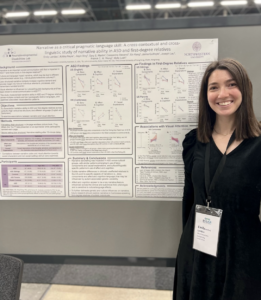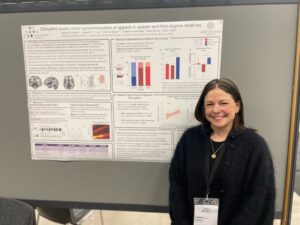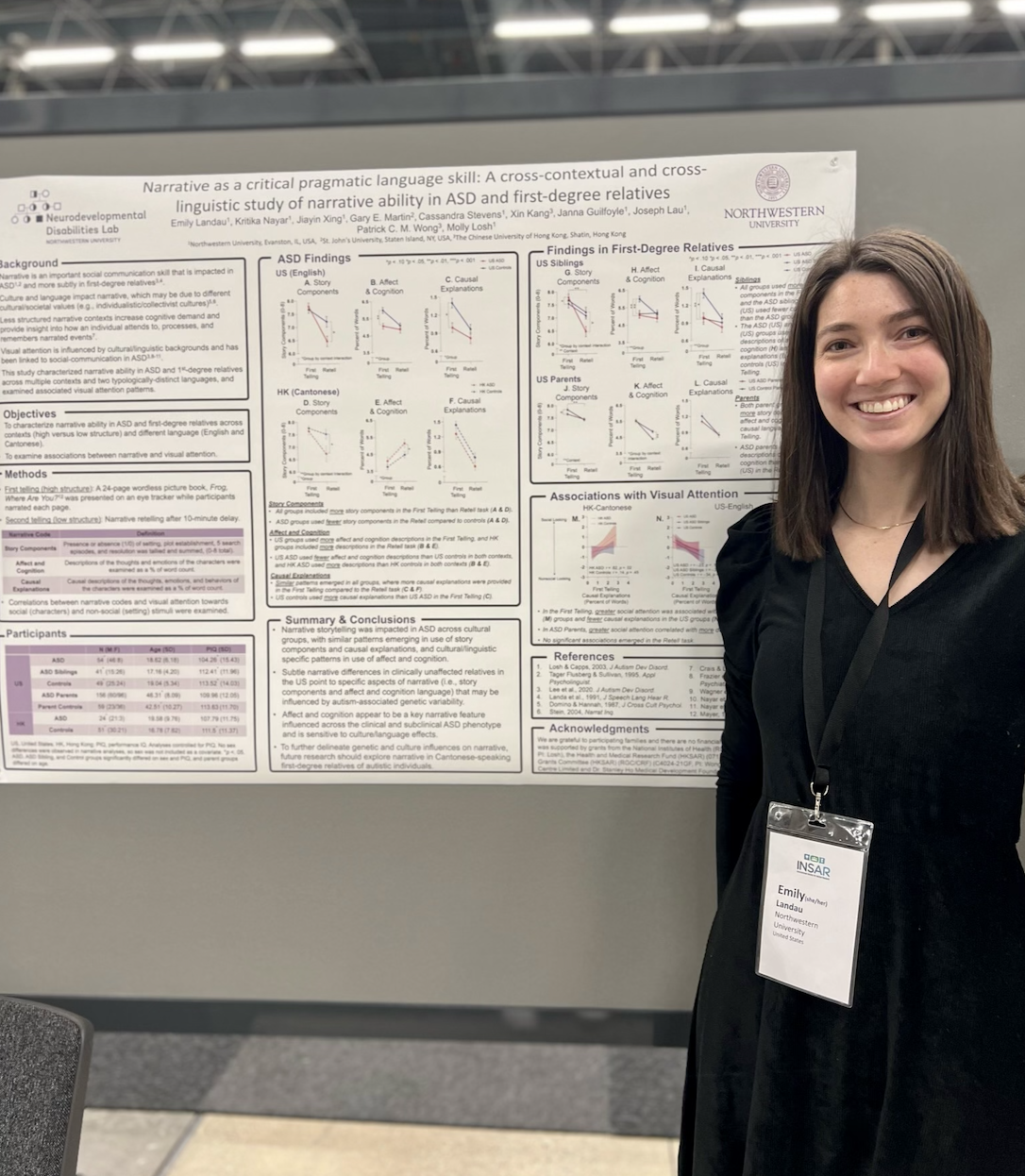Emily Landau (bottom left), fourth-year clinical psychology graduate student, presented her research at INSAR this year, and her study explored narrative (i.e. storytelling) ability, which is an important skill for social communication. Her project characterized narrative ability in autistic individuals and their first-degree relatives across contexts (high versus low structure) and different language (English and Cantonese), and also explored the associations between narrative and visual attention. Overall, her project found that narrative was impacted in ASD across groups, with specific patterns emerging that were specific to culture and diagnostic effects. She also found associations between narrative and visual attention, suggesting that what participants paid attention influenced their speech and vice versa.
Janna Guilfoyle (bottom right), fifth-year clinical psychology graduate student, presented preliminary data from her dissertation, which investigated spontaneous audio-motor synchrony and underpinning neural speech perception in autism and first-degree relatives. Spontaneous rhythmic synchronization of speech has been linked to enhanced neural connectivity in speech motor areas, better brain-to-stimulus entrainment, and advantages in language learning. Reduced synchronization of speech with external rhythms in autism and their relatives was shown relative to controls, suggesting a link to autism-related genes. Greater synchrony was associated with better neural tracking of speech sounds as measured by the Frequency Following Response (FFR). Results suggest that individual variability in speech and language features linked to autism genetic liability may be influenced by disrupted audio-motor synchrony and speech perception.




